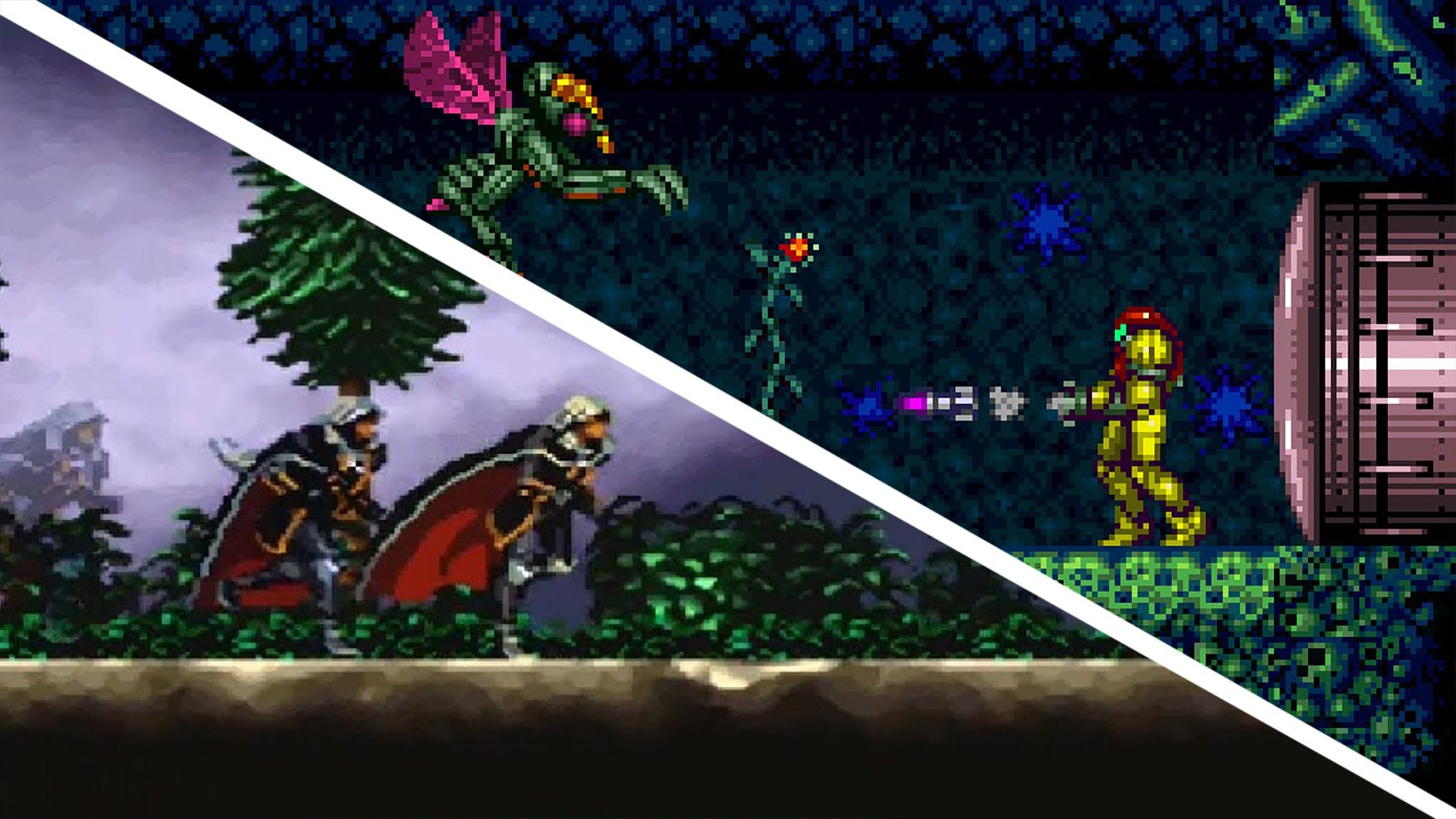![]() Key Takeaway
Key Takeaway
Metroidvania games are those that combine elements from titles in the Metroid and Castlevania series.
The majority of Metroidvanias contain the following elements:
- Are platformer games
- Focus on non-linear exploration
- Involve side-scrolling
- Usually have a 2D perspective
- Progress requires obtaining upgrades
- Said upgrades let you access new routes and areas
- Possess a moderately high degree of difficulty
- Frequently feature puzzles (but not always)
- Are dominantly singleplayer (with a few exceptions)
- Involve lots of combat
- Often have excellent visuals and audio design
The term Metroidvania is a combination of the names for the two major franchises it is referencing: Metroid and Castlevania. Metroidvania games are those that have gameplay elements found in the aforementioned series, such as non-linear exploration, upgrade-locked areas, and more.
Table Of Contents
Which Gameplay Features Make a Title a Metroidvania Game
Regardless of where you go for information about Metroidvania games, you’ll get varying answers on what such titles entail. With that said, the simplest definition is that Metroidvania games are those that combine elements from titles in the Metroid and Castlevania series.
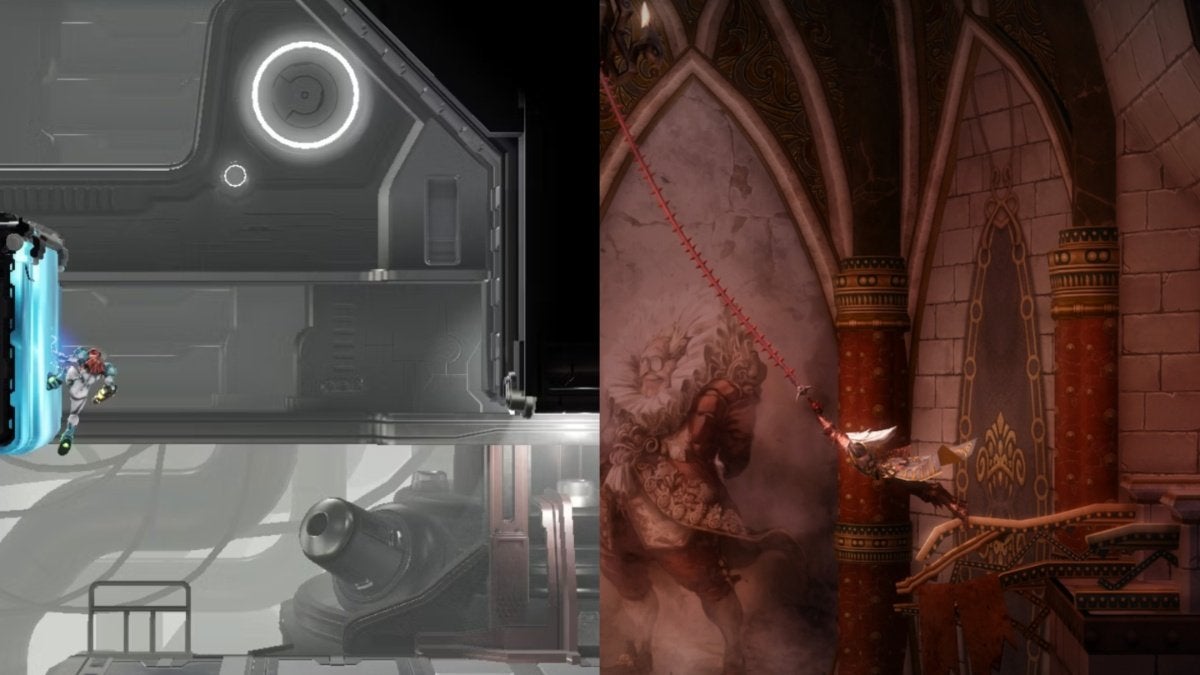
Both of the aforementioned series feature platforming, gaining upgrades, and using said upgrades to get past obstacles (and perform other feats). There’s also a heavy focus on retracing your steps.
For example, you may come across a barrier of blue chains that you can’t get through, but, if you explore somewhere else, you may find an item or ability that lets you break through such barricades.
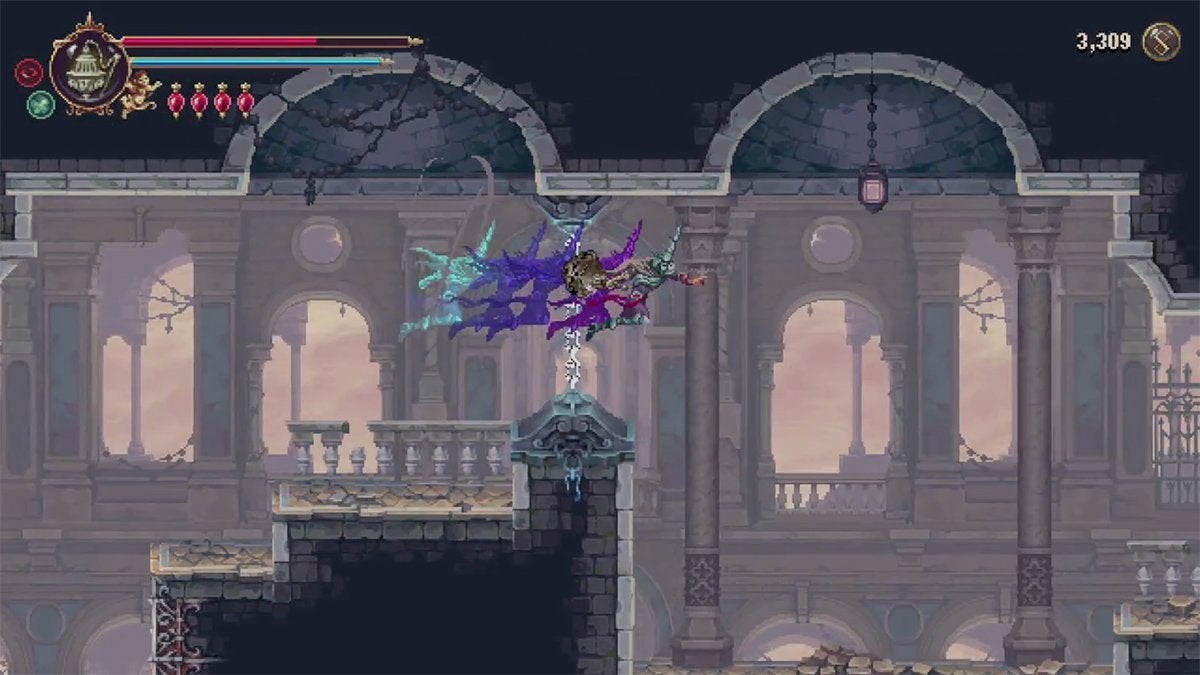
With that said, there are plenty of other features that cause a game to get classified as one in the Metroidvania genre—colloquially referred to as “Metroidvanias.”
Platforming
The majority of Metroidvanias are platformer games. However, not all platformer games are Metroidvanias. Titles in the Metroid and Castlevania series both heavily feature leaping across gaps, climbing walls, and other methods of traversing terrain.
Many Super Mario games are platformers, but they are not Metroidvanias because they lack path-retracing, upgrade-locked areas, and other gameplay components. More on that later.
Such navigation forces the player to find ways through or around obstacles of all kinds as well as makes them physically get from one point to another. This is a great way to instill a sense of scale for the in-game world. What’s more, this organically adds challenge to the gameplay by training players to avoid deadly traps.
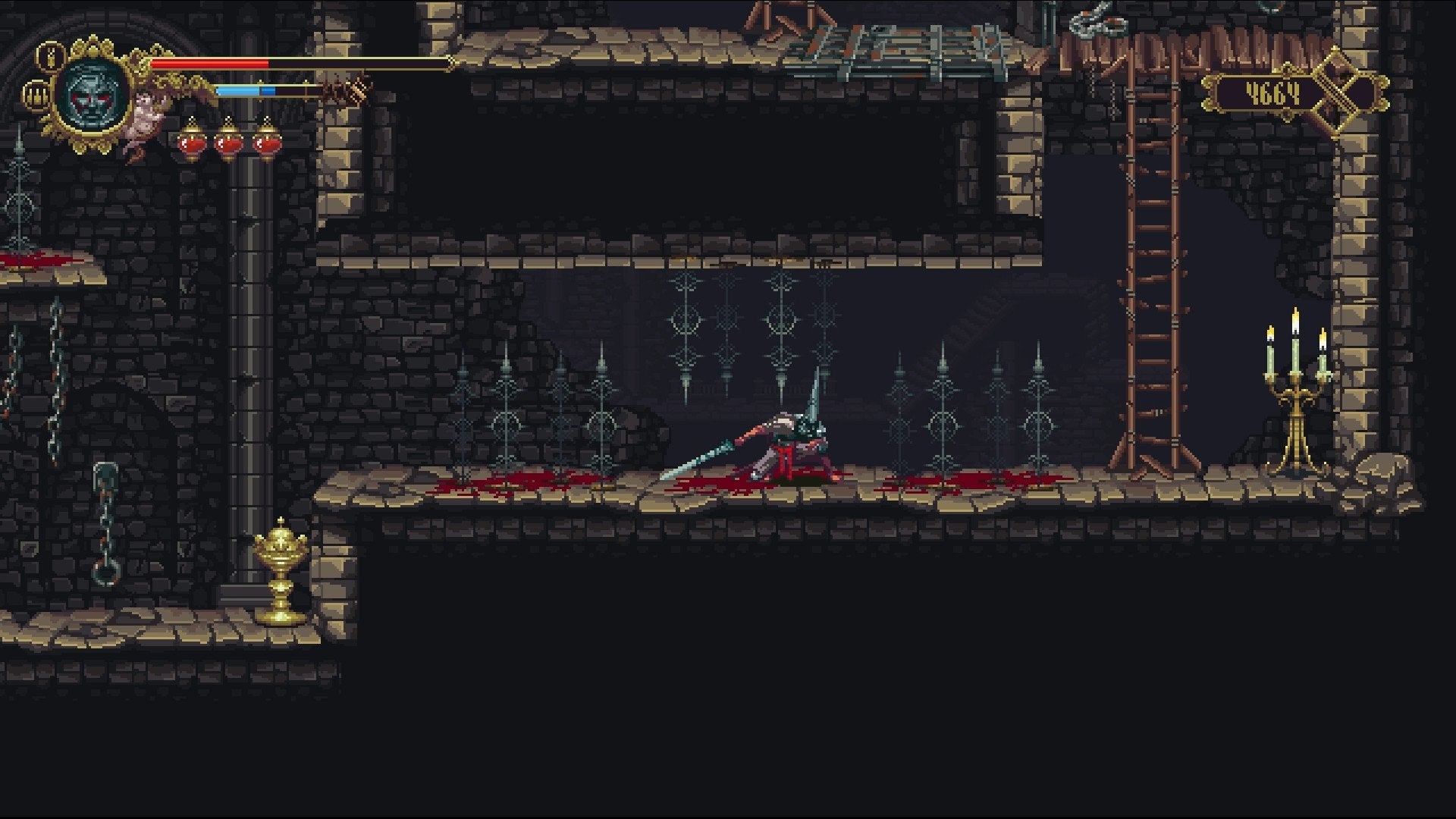
On top of that, this is an ideal way to immerse players into the setting by getting them to pass by scenic vistas, horrid events, and much more. Platforming ties in closely with the exploration and side-scrolling aspects of Metroidvanias.
Exploration
As with platforming, exploration is important for Metroidvanias. The point of many games in this genre is to get gamers to take a journey through a world full of beauty, tragedy, or both. As mentioned in the platforming section above, this allows developers to impose many types of scenery upon the eyes of players.
Exploration is also satisfying in games that have interesting lore and unique settings. Players want to be a part of their game; they don’t simply want to blow past pixels. Gaming is about enjoying a medium that you can interact with; therefore successful games require traits that players can latch onto physically, mentally, and emotionally.
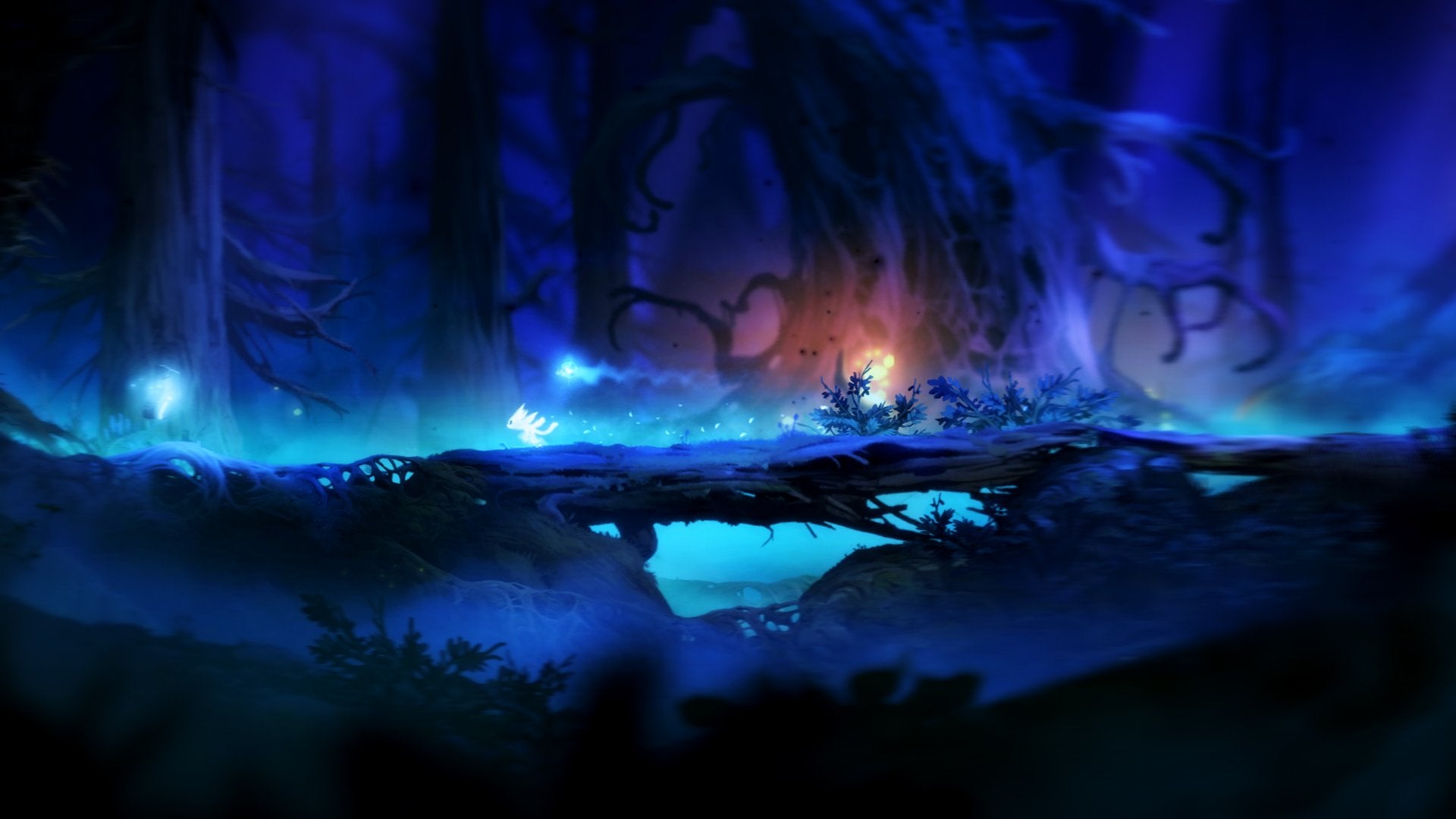
Fast-travel may get unlocked later on; however, before that point, it’s crucial that players run, jump, and climb through the world for the maximum Metroidvania merriment. Exploration goes hand-in-hand with unlocking new routes.
There’s also a common trope of hiding secrets and rewards of all varieties around the map to encourage exploration. There are few things more satisfying than smacking a suspicious wall only to find out it’s an illusion masking a room with a chest overflowing with treasure.
Side-Scrolling
Side-scrolling refers to what happens in 2D games where you walk off the edge of the screen and end up in a new area. The act of moving from one screen to another (in any direction; up, down, left, or right) forces the game to load another region.
Think of when you’re watching VGKAMI’s YouTube Shorts and you want to move on to the next video—you’d scroll down to get to the following short. The act of scrolling through videos is the same as moving from one area to another in Metroidvanias.
Instead of having all the world data loaded at once, Metroidvanias (and many other genres) separate games into different areas. This vastly decreases the stress on the game engine, which, in turn, drastically increases game performance as well as other benefits. The act of “scrolling” from one region into the next is a natural way to make a game less laggy and avoid crashes.
2D Versus 3D
There’s a pretty heated debate online about whether or not 3D games can be Metroidvanias. The argument stems from the fact that both Metroid and Castlevania games aren’t exclusive to 2D or 3D perspectives. There have been titles in these series that have been 2D, 3D, or both (2.5D).
As such, we’re going to say that Metroidvanias can validly appear in 2D, 2.5D, and 3D forms. Keep in mind that although the chosen perspective never negatively affects gameplay (the quality of a title exclusively relates to negative opinions), most Metroidvanias are 2D.
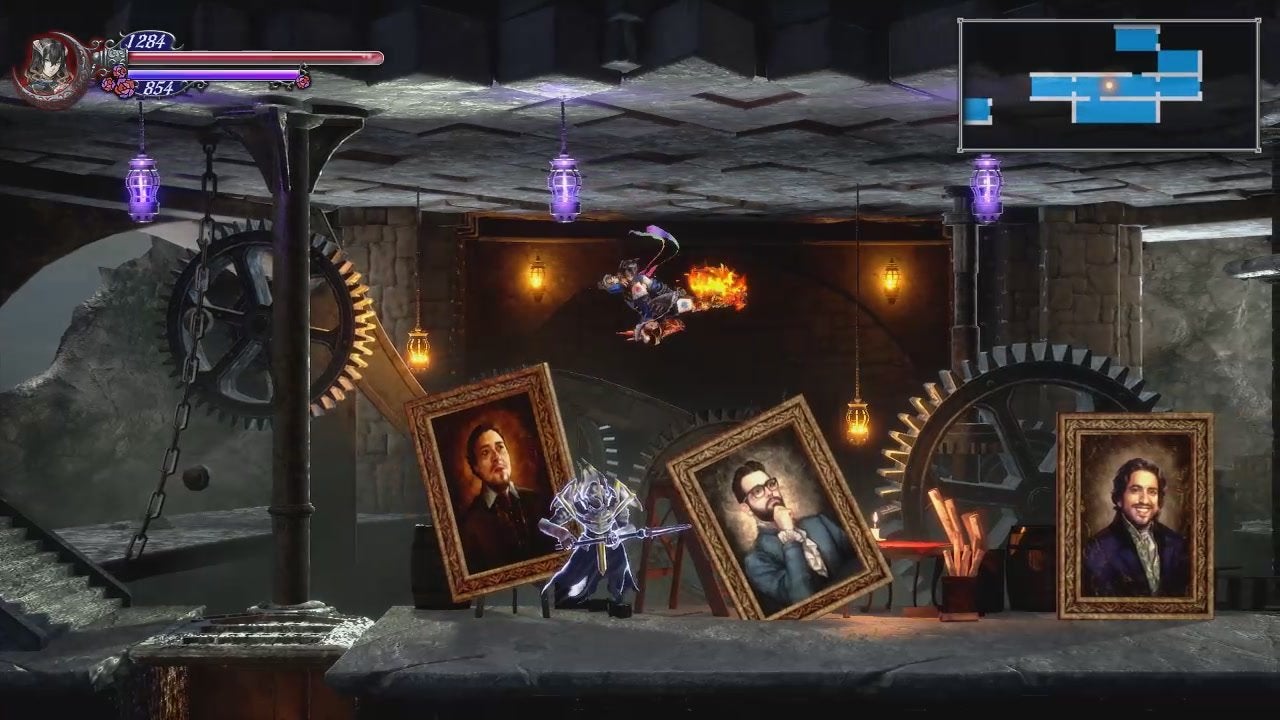
This is due to many developers emulating the perspective of older Metroid and Castlevania games. Originally, these series were exclusively 2D. However, with the advancement in technology, 3D games have become more and more possible.
In recent times, the reversion back to 2D perspectives has become fairly popular. Look at relatively new Metroidvanias like Metroid Dread and Castlevania: Lords of Shadow – Mirror of Fate.
Upgrades
Upgrades—in terms of both combat prowess and maneuverability—are a key component of Metroidvanias. Such enhancements manifest in the form of new items, skills, and abilities found around the in-game world.
In their most boring forms, they take the shape of a ‘key’ that lets you pass through previously locked doors. Alternatively, upgrades can show up as new character traits that let you reach unexplored areas and perform stronger attacks.
Ideally, upgrades should let you enter unvisited locales and unleash new battle tactics. These mechanics are closely connected to unlocking new routes, difficulty, and puzzles.
Unlocking New Routes
As you explore and gain upgrades, you’ll inevitably unlock new routes—which is a core feature in all true Metroidvania games. By forcing you to traverse tricky terrain, find a dead end, and retrace your steps, Metroidvanias manipulate your mind into learning the layout of a world.
The completionists and treasure hunters out there will make mental notes of where they have yet to explore in hopes of finding delicious loot. This organically increases gameplay time in a way that isn’t frustrating and rewards gamers keen to delve into every nook and cranny of a world.
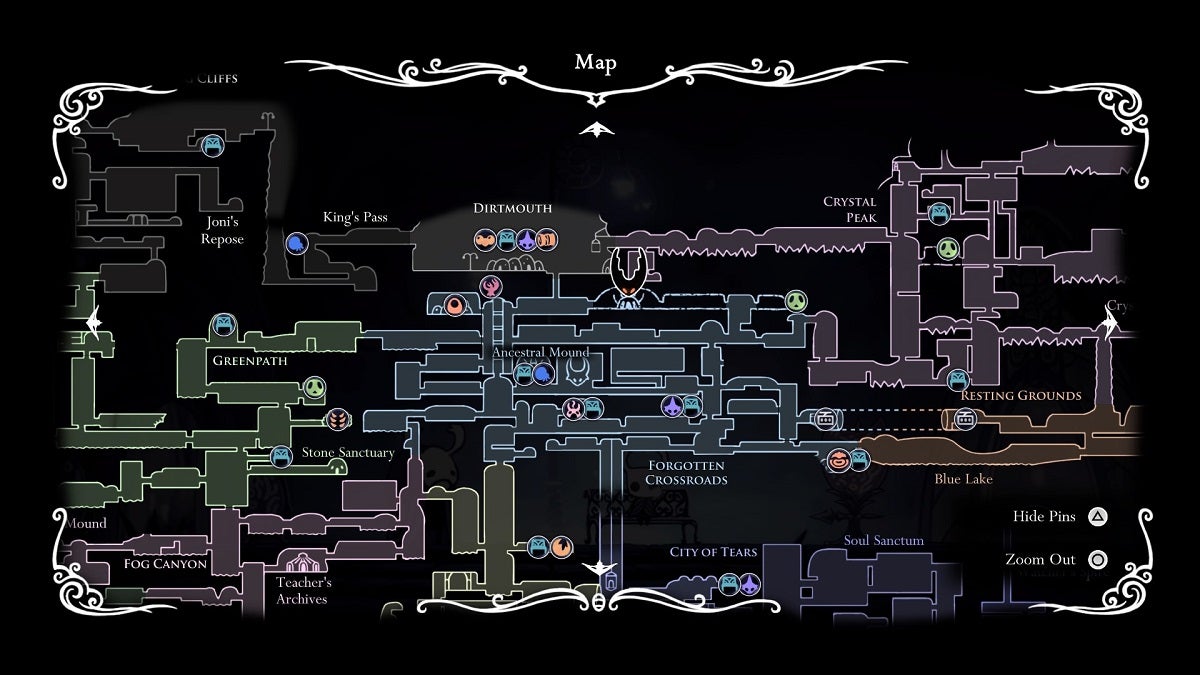
In addition to that, progress is often barred by impassable gates. You’ll frequently see (or get a hint of) what lies beyond a locked door but will need to come back later when you’re stronger, wiser, and more capable. Developers use this to reveal tantalizing details of what lies ahead—both to maintain interest and intimate players.
Difficulty
While the difficulty of individual games can vary greatly, classically speaking, Metroid and Castlevania titles (and therefore Metroidvanias) are meant to be challenging. With this in mind, you can see how and why many of them are rather hard—their predecessors began this trend.
It needs to be mentioned that there is a great difference between genuine difficulty and nonsensically unfair gameplay. For instance, training players to dodge, parry, and attack with precise timing is fair and balanced gameplay. Whereas throwing too many foes at a gamer is—plainly speaking—awkward, lazy, and unimaginative.
What constitutes “too many” is subjective and depends on the game in question. To give you a frame of reference: fighting two boss-tier enemies at once is difficult but manageable in well-designed games, but three at once is going a step too far in many situations.
Puzzles
Not all Metroidvanias contain puzzles; however, many do. This alternative to combat varies what types of tasks developers can place before players. Sometimes, you’ll need to memorize patterns, while, other times, you’re expected to perform a series of jumps and air-dashes to reach a new area.
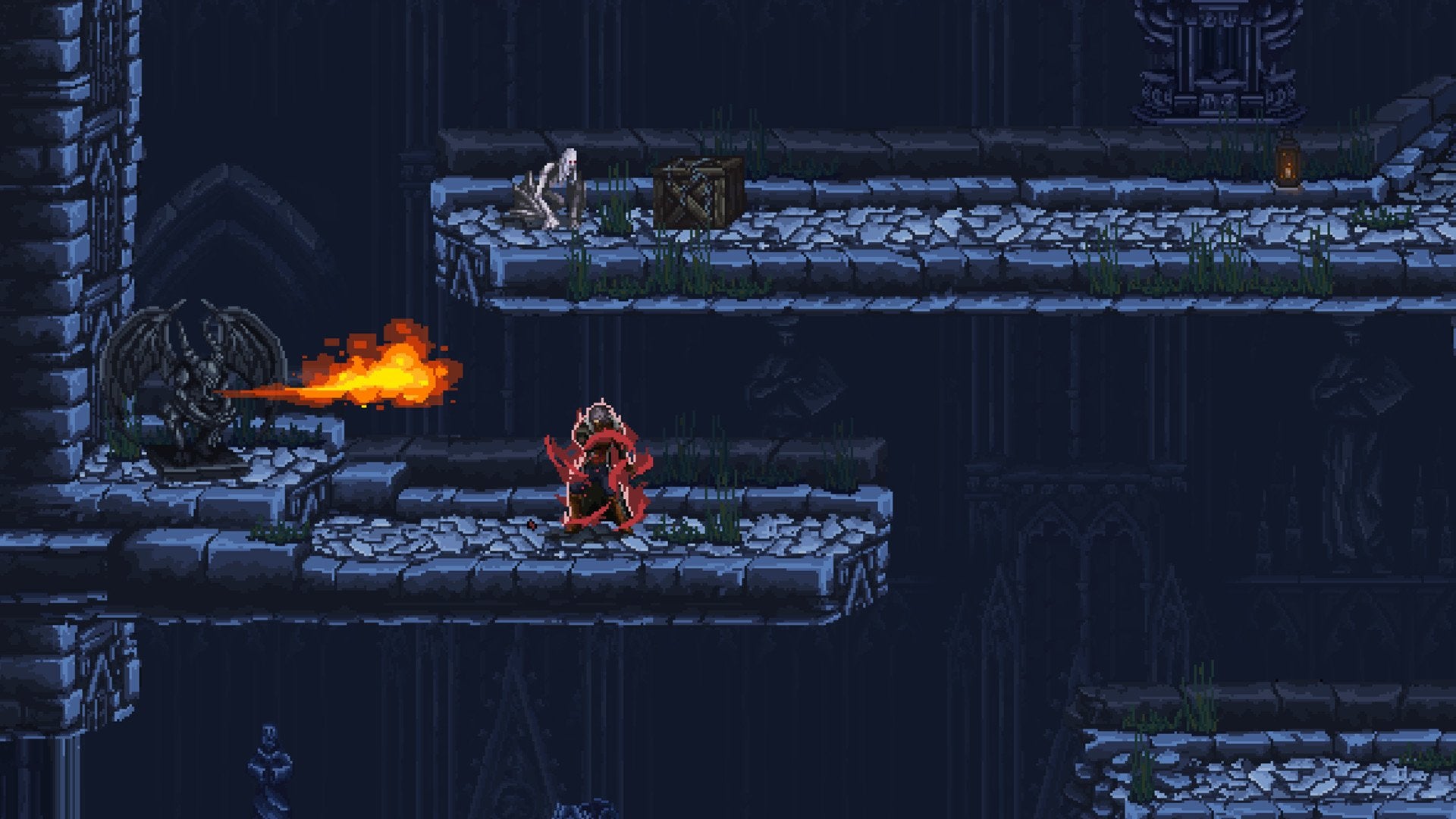
Improving your problem-solving skills is a great gameplay companion for testing your mettle in combat. This diversification enhances your digital adventure by requiring development in multiple areas.
In turn, this prevents a game from getting too repetitive. On top of that, this furthers the intellectual aspects of even the most unexpectedly educational games.
Singleplayer (Mostly)
With very few exceptions, the majority of Metrodvanias are singleplayer experiences. For the most part, if you decide to begin your journey through the dark and twisted destination of your choosing, you’ll be doing so by yourself. This is exemplified by most Metroid and Castlevania games not supporting local or online multiplayer functions.
However, some titles in this genre let you play with family and friends. A great example is Salt and Sanctuary, within which you can battle through dim and saline domains with allies on some platforms (PS4 and PC-only).
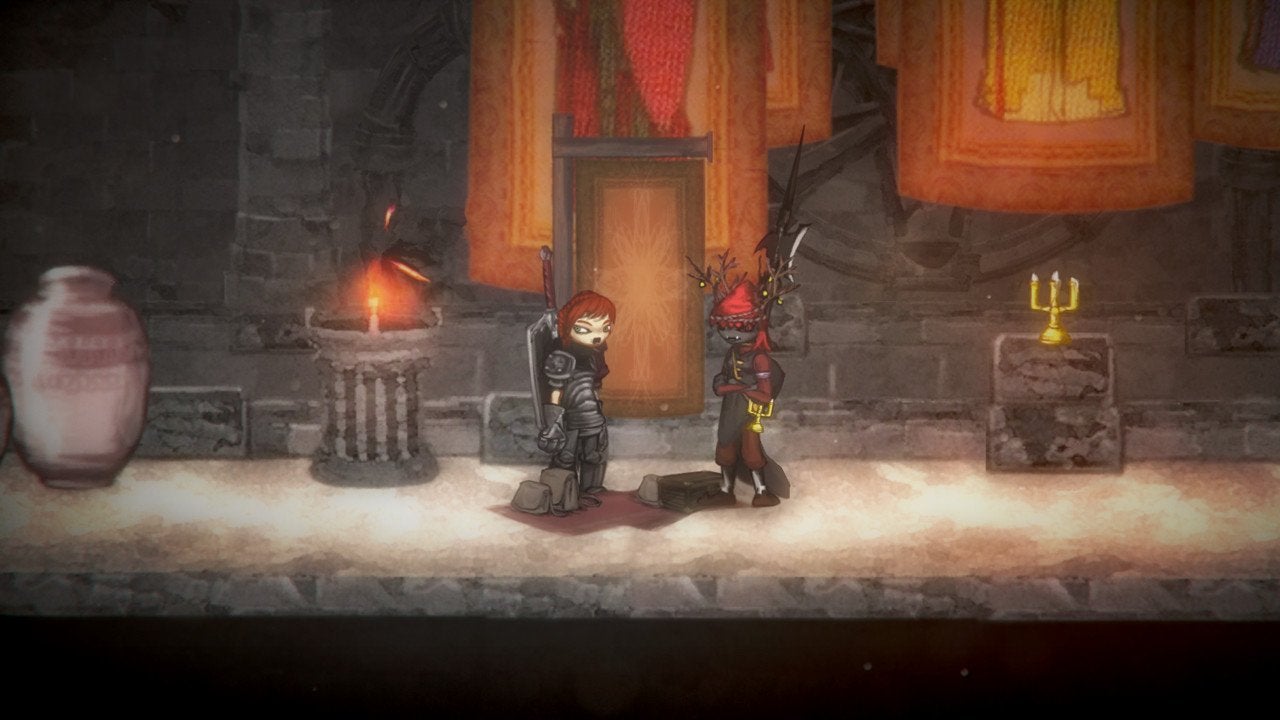
We like the “more the merrier” approach; however, it’s quite rare in this genre. Possibly, in the future, there will be more true Metroidvanias with such features.
On a related note, an offspring of Metroidvanias—Soulslikes—usually features multiplayer gameplay in a few different ways. Co-op, world-invasions, and more are possible in Soulslikes, which add new layers to the already fun gameplay.
Hacking, Slashing, and Blasting
All Metroidvanias must include combat to be categorized into this genre. If there are no aliens or undead monsters to slay, then it might as well be an art game. There’s nothing wrong with art games, mind you—but they aren’t Metroidvanias. Conversely, Metroidvanias can most certainly be art. Look at the beautiful visuals in Blasphemous and Blasphemous 2.
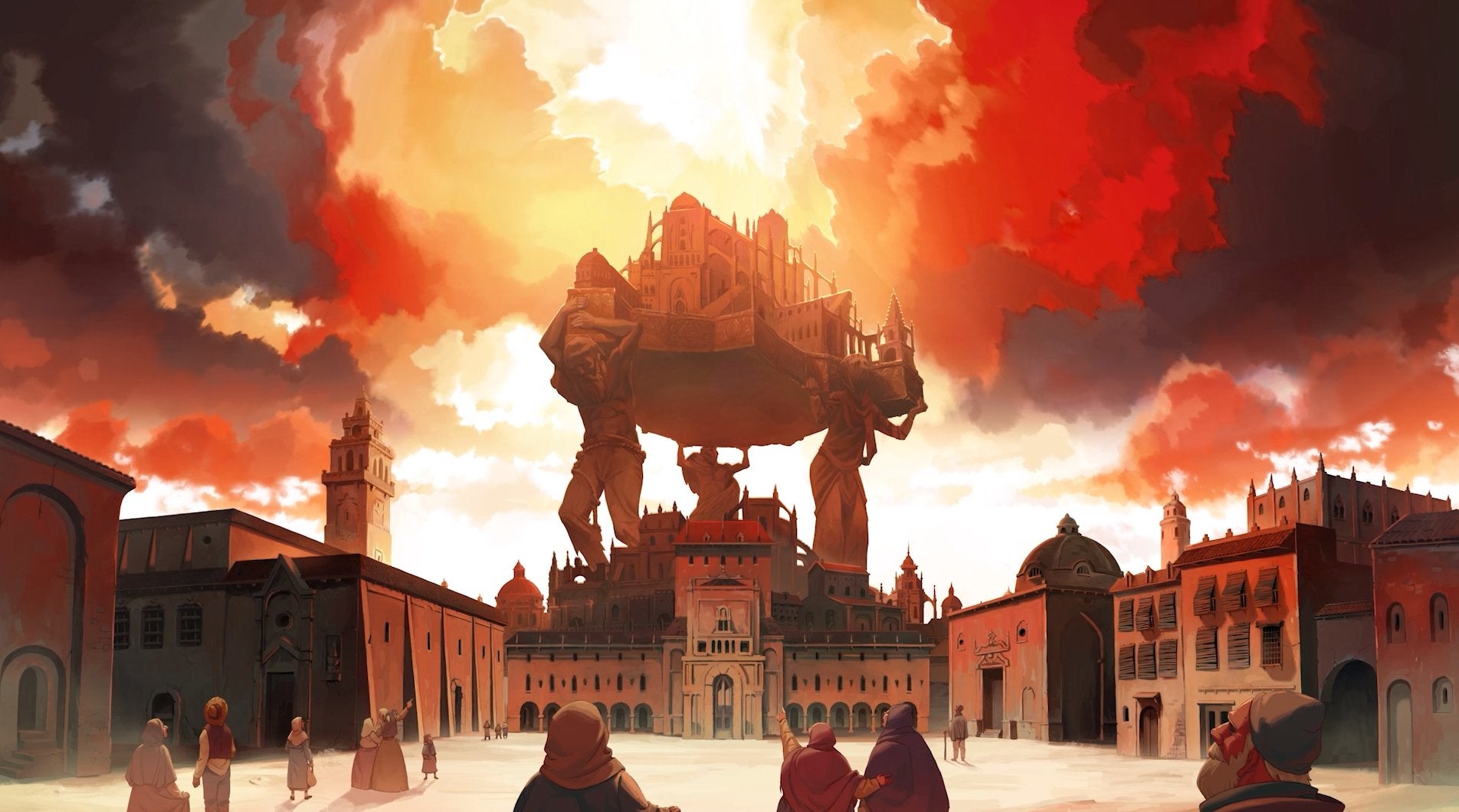
One of the biggest reasons to play games in this genre is to fight your way through a planet of tentacle-toting extra-terrestrials or waves upon waves of vampires, werewolves, and zombies.
What’s more, the enemy variety is also an important component of Metroid and Castlevania games. It makes perfect sense that the genre named after these two series possesses this same aspect.
Aesthetics
The visual and auditory styles of each game differ vastly. However, the best Metroidvanias need to have stellar graphics and amazing soundtracks. Metroid games have always been on the cutting edge of impressive art design while those from the Castlevania series are consistently released with fantastic music.
Furthermore, the reverse is true as well, as Metroid games often have impeccable audio design (those cool and crazy alien noises!) and Castlevania titles frequently feature beautiful imagery (Dracula’s castle interior is the epitome of dark fantasy regality).
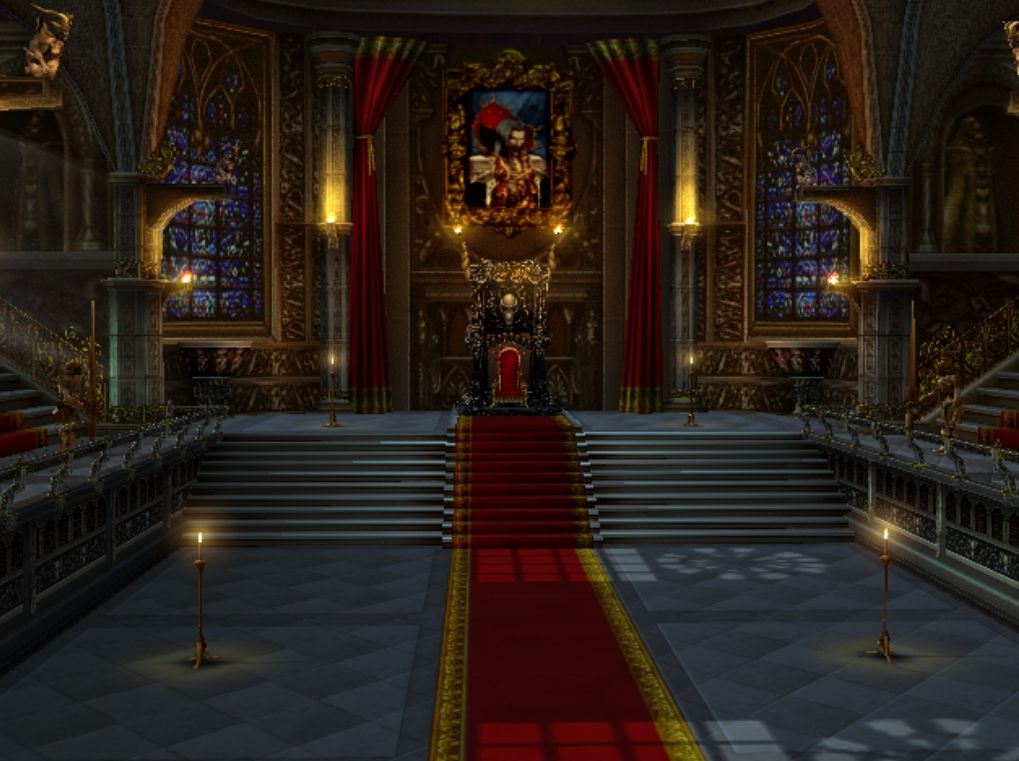
Where Did the Term “Metroidvania” Come From?
It’s clear that the term itself is a combination of Metroid and Castlevania—but who came up with it?
Sadly, most of the finer points of this discussion have been lost to time. However, many consider the birth of the term “Metroidvania” to have happened shortly after the release of Castlevania: Symphony of the Night (1997).
Symphony of the Night was the first Castlevania game to heavily use Metroid-like elements, such as non-linear exploration, doors unlocked with upgrades, and more. Following the release and widespread success of this game, the formula for it became more and more prominent.
Around the turn of the millennium, a video game journalist by the name of Jeremy Parish began using the term heavily to describe games similar to Castlevania: Symphony of the Night. He used “Metroidvania” almost to an absurd degree—but he does not claim to have created this term.
Parish states in one of his 2017 US Gamer articles that he heard the term from one of his former coworkers at 1up.com, Scott Sharkey. With that said, Parish does not deny that he helped to propagate this term through as many outlets as possible.
Although, as mentioned before, there isn’t too much to go off of besides this in terms of this term’s origins. There’s no official statement from 1up.com, and, in fact, it no longer even exists. Thankfully, Sharkey himself (allegedly) was able to clear things up himself on X with a simple yet defining post about the matter.

Despite the legacy and mystery surrounding this term, the answer to the question of its origin is surprisingly—and satisfyingly—straightforward.
Metroidvania Vs. Souslike—What’s the Difference?
Metroidvanias and Soulslikes often get lumped together, or outright confused with one another. Metroidvanias definitely came first, as the primordial Metroidvania game (Castlevania: Symphony of the Night) came out in 1997. This was well before the first “Souls” game: Demon’s Souls (2009).
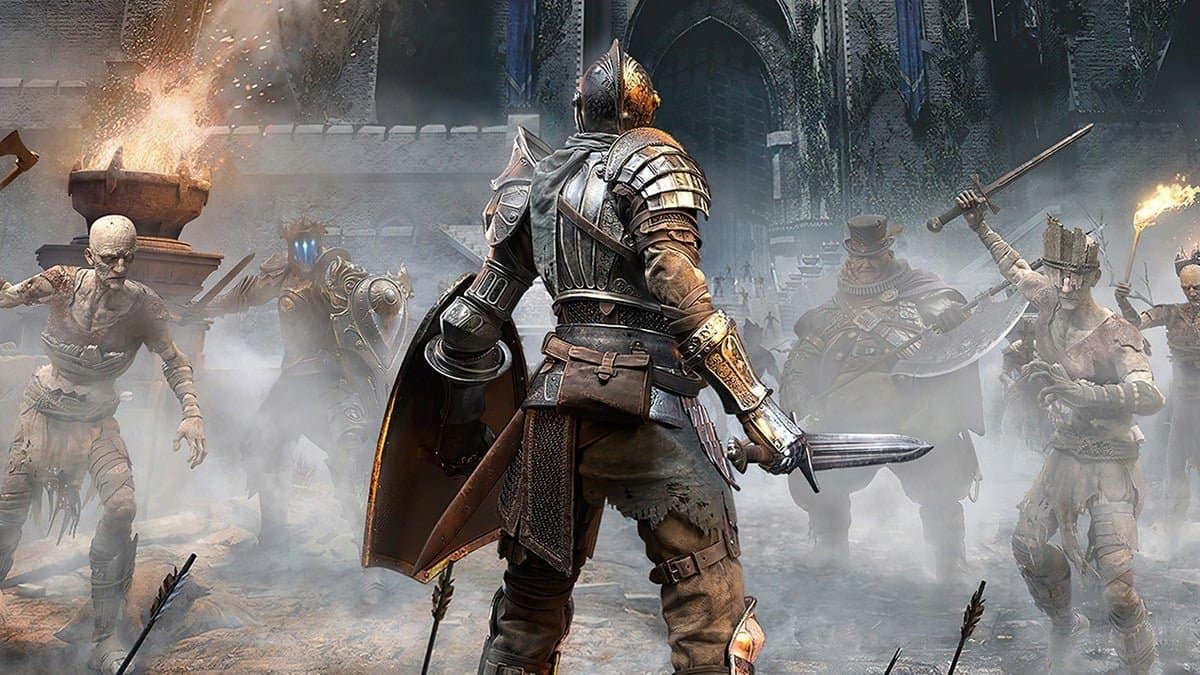
While the two are similar, it’s better to think of Metroidvanias are the parent and Soulslikes as the child. The latter has many of the same elements as the former; however, it possesses some differences as well.
Soulslikes are attributed to have redefined action RPGs through a focus on a slower and more methodical approach to combat in an era where things were getting faster and faster. Timing became more about reacting to an enemy than it was about chaining together rampaging combos. The usage of shields to block and parry was significant—but interlaced with rolling, sidesteps, and other evasive maneuvers.
What’s more, stamina bars became an ingrained mechanic, which prevented you from spamming attacks. If you did, you’d run out of the vital resource that lets you hit foes, block their blows, and dodge devastating assaults.
A third crucial difference is that most Soulslike games are 3D, whereas most Metroidvanias are 2D. Soulslikes are 3D because the first game in this genre was set in this perspective. This is much like how most Metroidvanias are 2D as a result of Castlevania: Symphony of the Night being played from this point of view.
In the current era, some Metroidvanias have adopted one or more of the traits original to Soulslikes, making these two genres blend into one another. This contributes to the confusion about the two but is understandable. Children learn from their parents; however, the reverse can be true as well.
List of the Best Metroidvania Games
In no particular order, here’s a rundown of some of the best Metroidvania games ever made:
- Super Metroid
- Metroid Dread
- Castlevania: Symphony of the Night
- Cave Story
- Shadow Complex
- Guacamelee!
- Ori and the Blind Forest
- Ori and the Will of the Wisps
- Bloodstained: Ritual of the Night
- Blasphemous
- Blasphemous 2
- Dead Cells
- Hollow Knight
- ENDER LILIES: Quietus of the Knights
- The Last Faith
- Skul: The Hero Slayer
- Salt and Sanctuary
- Dark Devotion
- Astilibra Revision
- Dust: An Elysian Tail
- Axiom Verge
- Rogue Legacy 2
- Shantae and the Seven Sirens
- Record of Lodoss War-Deedlit in Wonder Labyrinth-
- Insanely Twisted Shadow Planet
If you’re a fan of platformer games that involve complex combat, you own it to yourself to explore the Metroidvania genre. We highly recommend any of the games on the list above. With that said, if you need a place to start, we recommend Blasphemous 2 and Hollow Knight, as we are experts in those games. Furthermore, you can visit our pages about those two titles for all the help you need. Sharpen your weapon and tighten those muscles—sinister adventures await…


